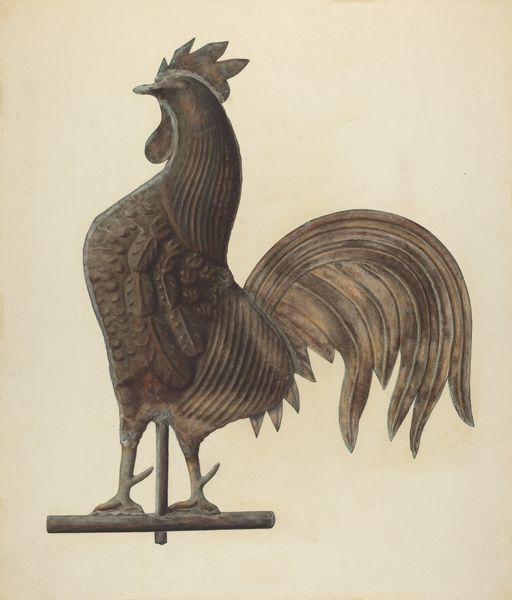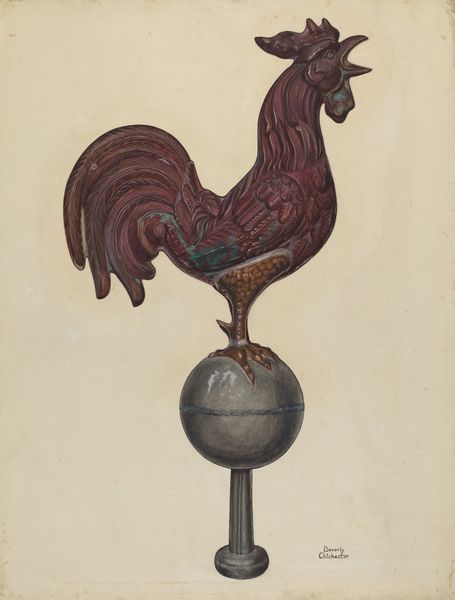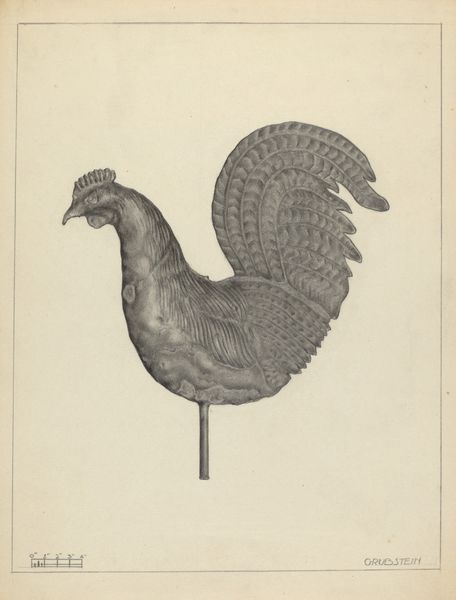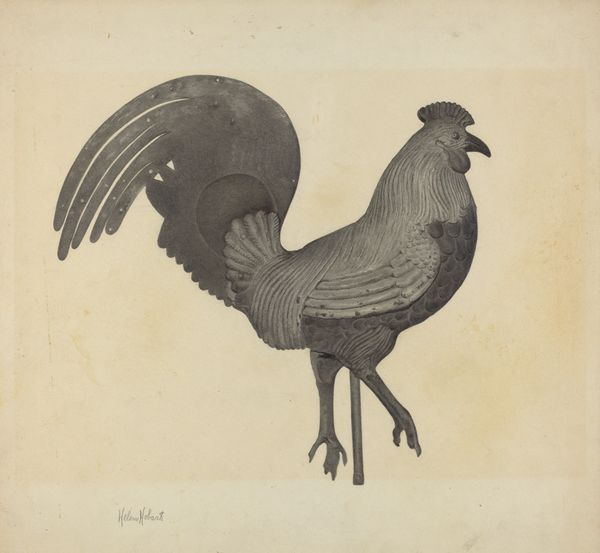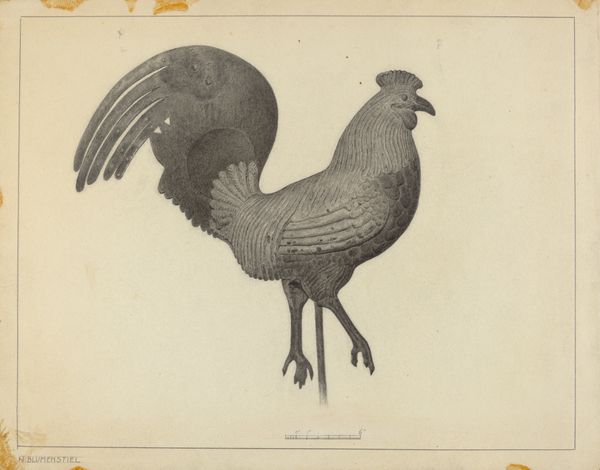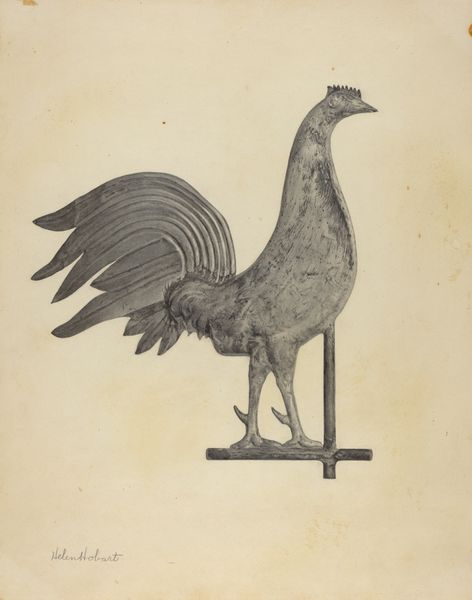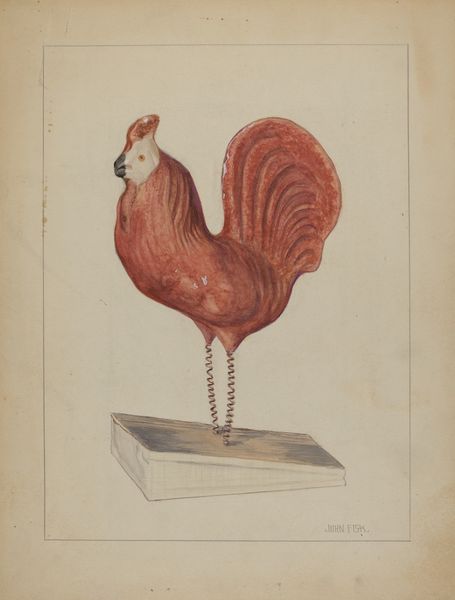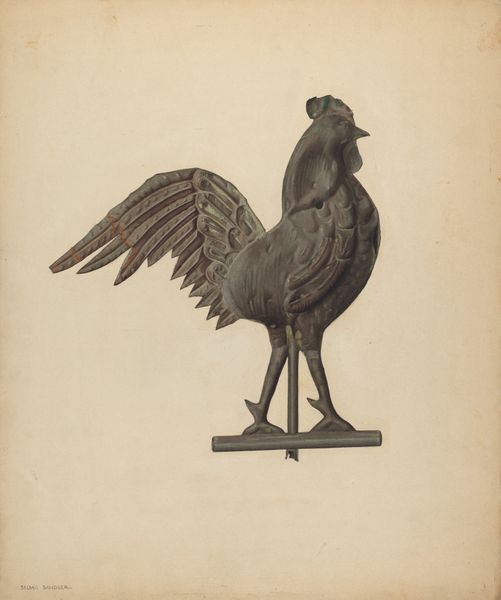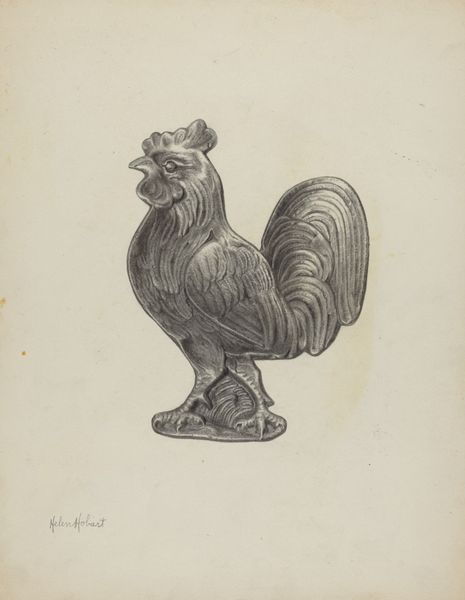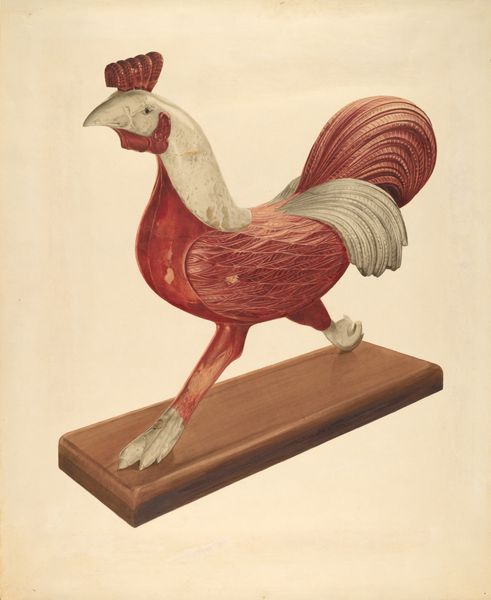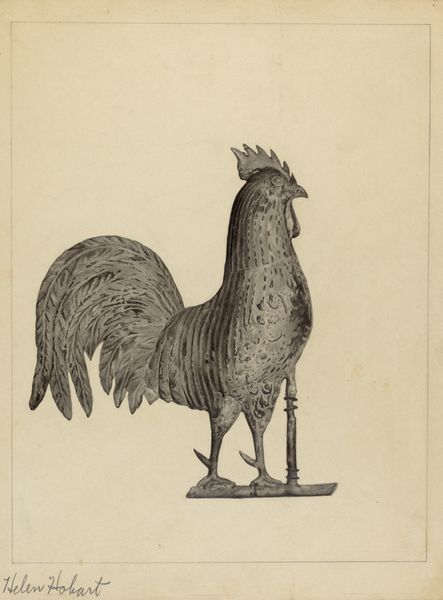
drawing, pencil
#
drawing
#
caricature
#
pencil
Dimensions: overall: 36.2 x 28.6 cm (14 1/4 x 11 1/4 in.) Original IAD Object: 72" high
Copyright: National Gallery of Art: CC0 1.0
This weather vane design was made by Albert Eyth, likely in the early to mid-20th century. It depicts a rooster rendered in iron, a material whose inherent qualities of strength and malleability have long made it a favorite for blacksmiths. Consider the labor involved in transforming raw iron ore into the finished product. First, smelting the ore, then shaping the metal through heating and hammering. Eyth's design speaks to the craft traditions of metalworking, specifically blacksmithing. The rooster, a common motif in weather vanes, symbolizes vigilance and heralds new beginnings. By placing the rooster atop a weather vane, Eyth elevates a functional object to a symbol of cultural identity. The choice of iron connects the weather vane to wider social issues of labor, politics, and consumption. Iron production was integral to industrialization, and the labor of ironworkers shaped the modern world. So, next time you see a weather vane, remember it is not just a practical device, but a testament to the ingenuity and skill of generations of makers.
Comments
No comments
Be the first to comment and join the conversation on the ultimate creative platform.
